What is OpenAI?
by Stephen M. Walker II, Co-Founder / CEO
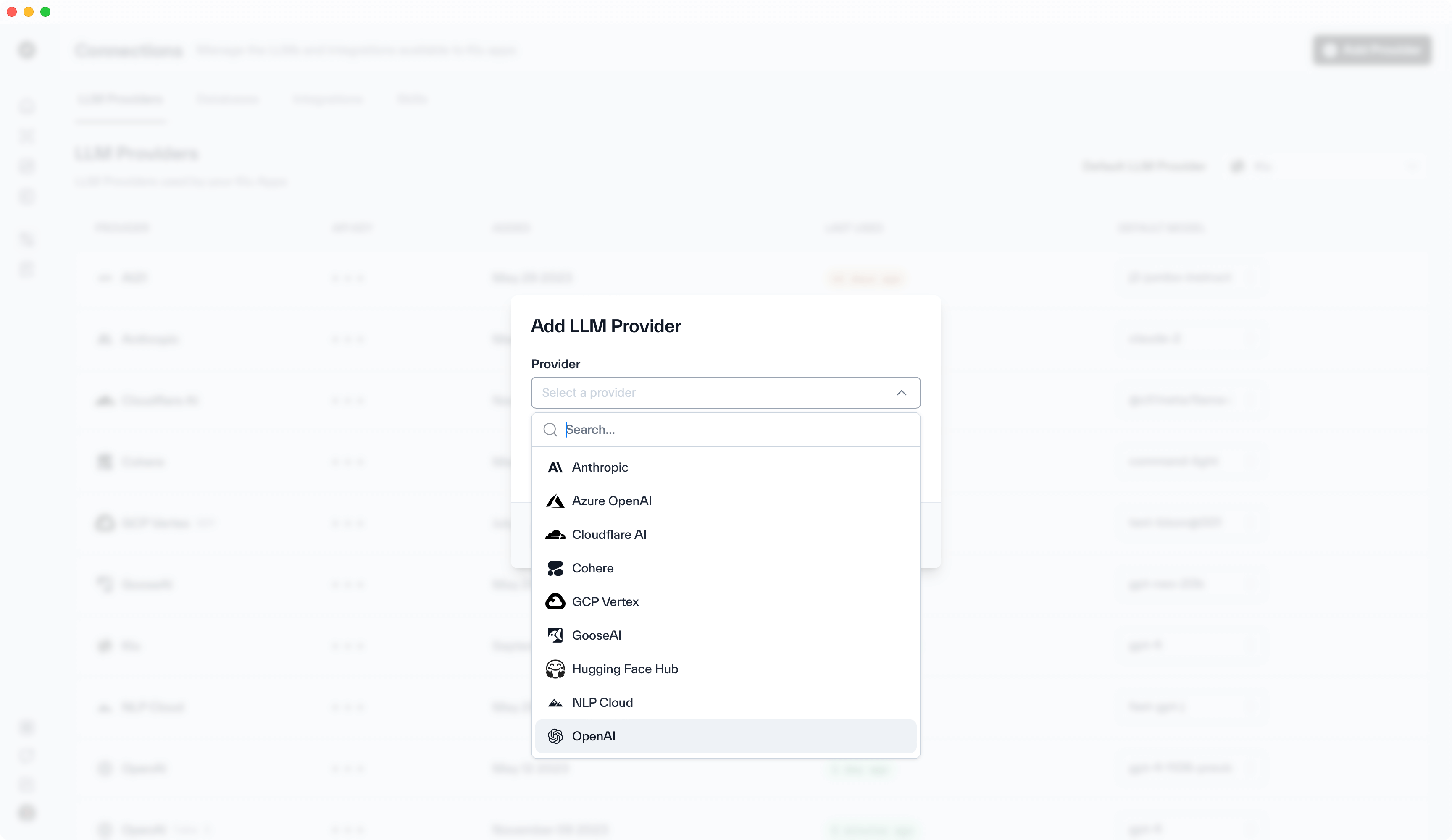
What is OpenAI?
OpenAI is an artificial intelligence research lab which is composed of both for-profit and non-profit branches. Formed in December 2015, OpenAI aims to ensure that artificial general intelligence (AGI) benefits all of humanity. The team behind OpenAI is committed to providing public goods to help society, with a focus on long-term safety, technical leadership and broadly distributed benefits. They also work to minimize competition and assist value-aligned, safety-conscious projects approaching AGI. OpenAI's most notable developments include AI models like GPT-4 and DALL-E.
OpenAI Achievements, History, and Future
OpenAI, since its inception, has made remarkable progress in artificial intelligence. It has developed powerful language models like GPT-3 and GPT-4, and created DALL-E, a model that generates unique images from text descriptions. In addition, it established a for-profit arm, OpenAI LP, to attract capital while staying true to its mission.
However, as OpenAI continues to advance AI research, it faces several challenges. These include striking a balance between commercial success and its commitment to ensuring AGI benefits all of humanity, addressing potential misuse of its AI models, and navigating the ethical and societal implications of AGI.
Moving forward, OpenAI's focus is on enhancing the safety and capabilities of its AI models, expanding access to its technology, and continuing to contribute to the AI community through research and policy advocacy.
What is OpenAI's background and mission?
OpenAI is an American artificial intelligence (AI) organization that consists of the non-profit OpenAI, Inc. and its for-profit subsidiary corporation OpenAI Global, LLC.
The organization was founded in 2015 by a group of individuals including Elon Musk, Sam Altman, Greg Brockman, and others, with the declared intention of developing "safe and beneficial" artificial general intelligence (AGI), which it defines as "highly autonomous systems that outperform humans at most economically valuable work".
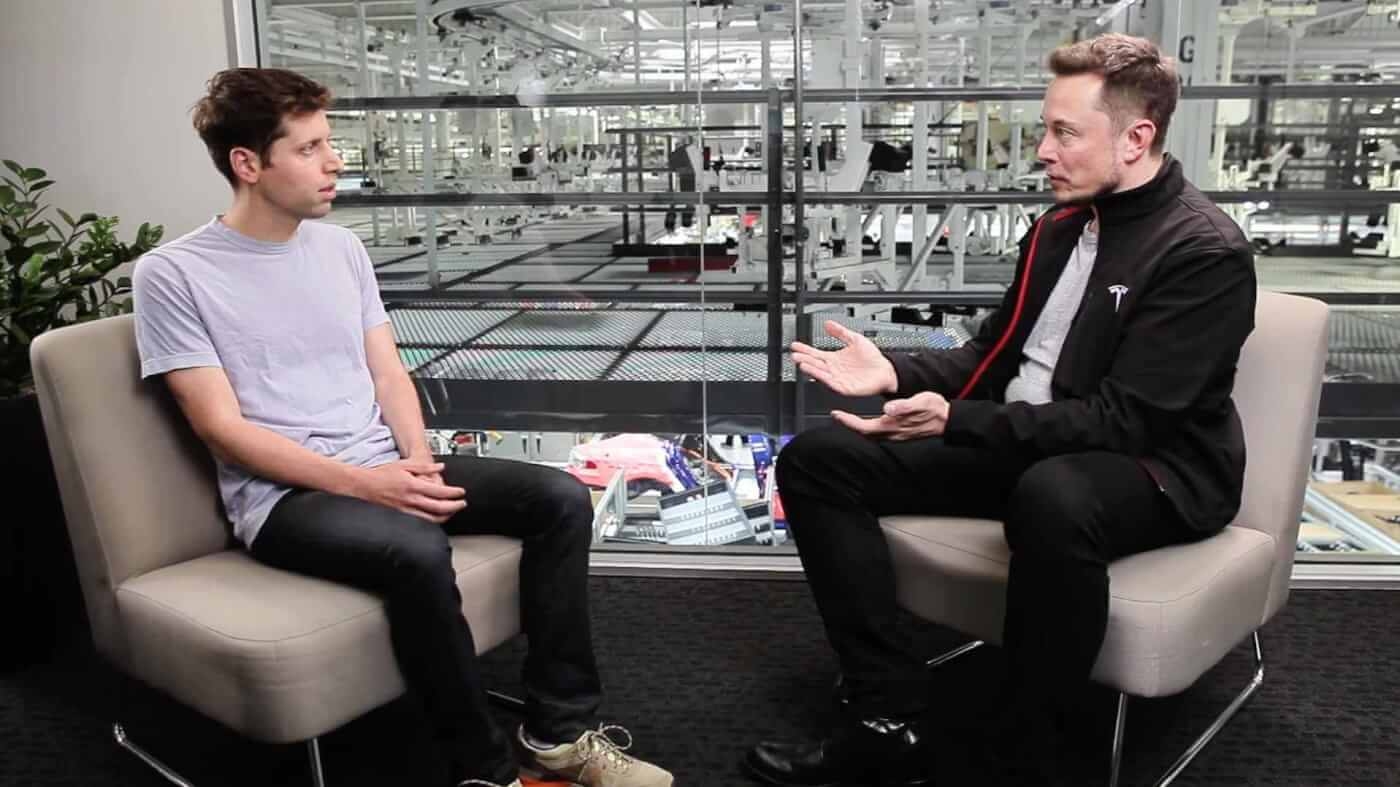
OpenAI's research primarily focuses on reinforcement learning (RL). One of its notable projects is OpenAI Five, a team of five AI-curated bots used in the competitive video game Dota 2, which learned to play against human players at a high skill level entirely through trial-and-error algorithms. Another significant project is the development of GPT-4, its flagship generative AI model, which has been used for content moderation, lightening the burden on human teams.
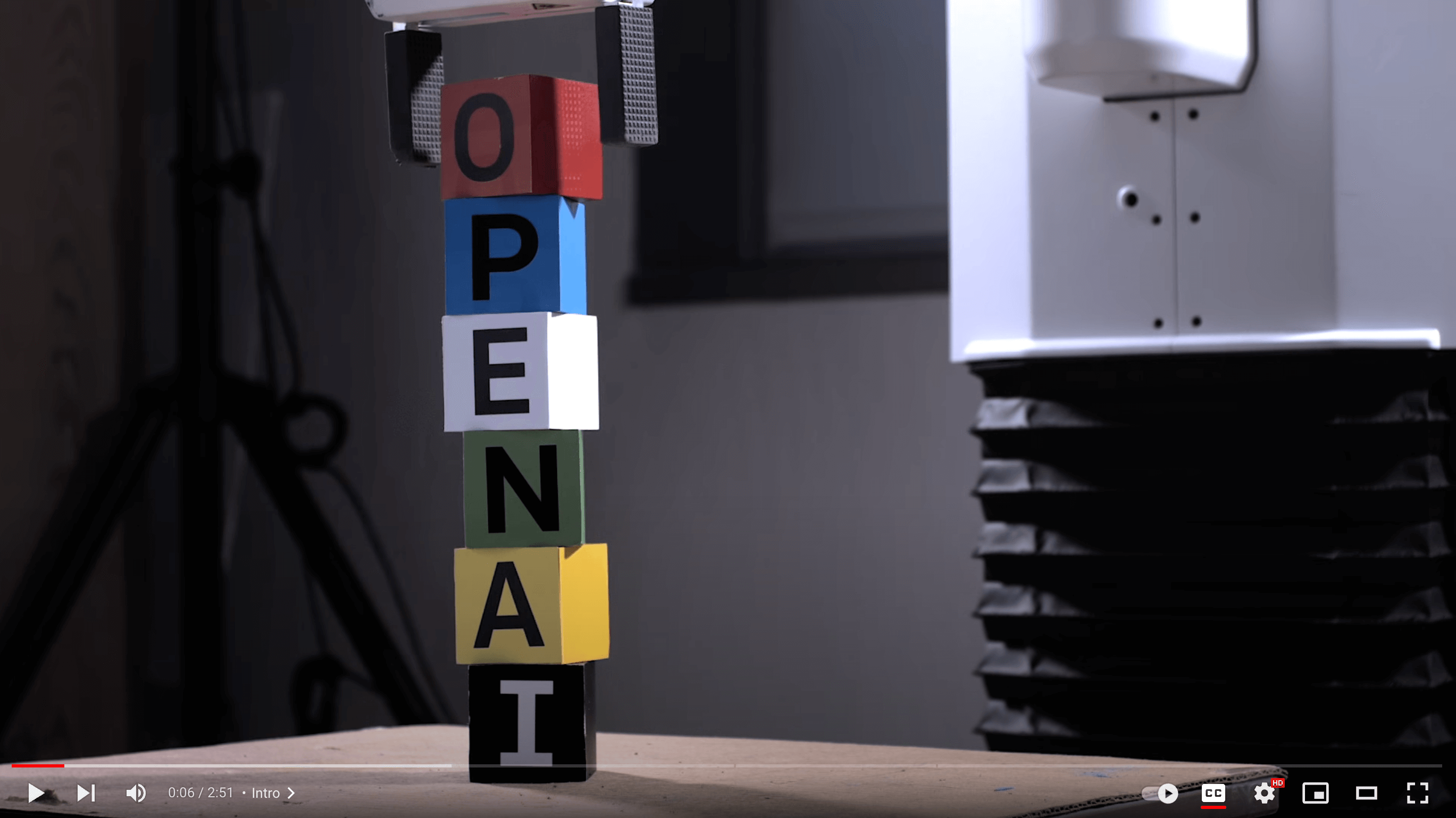
OpenAI has also been involved in partnerships with major tech companies. For instance, in 2019, OpenAI engaged in a multiyear partnership with Microsoft, enhancing Microsoft's cloud platform, Azure, with AI-based computing products. In 2023, Microsoft announced a multi-billion-dollar investment in OpenAI.
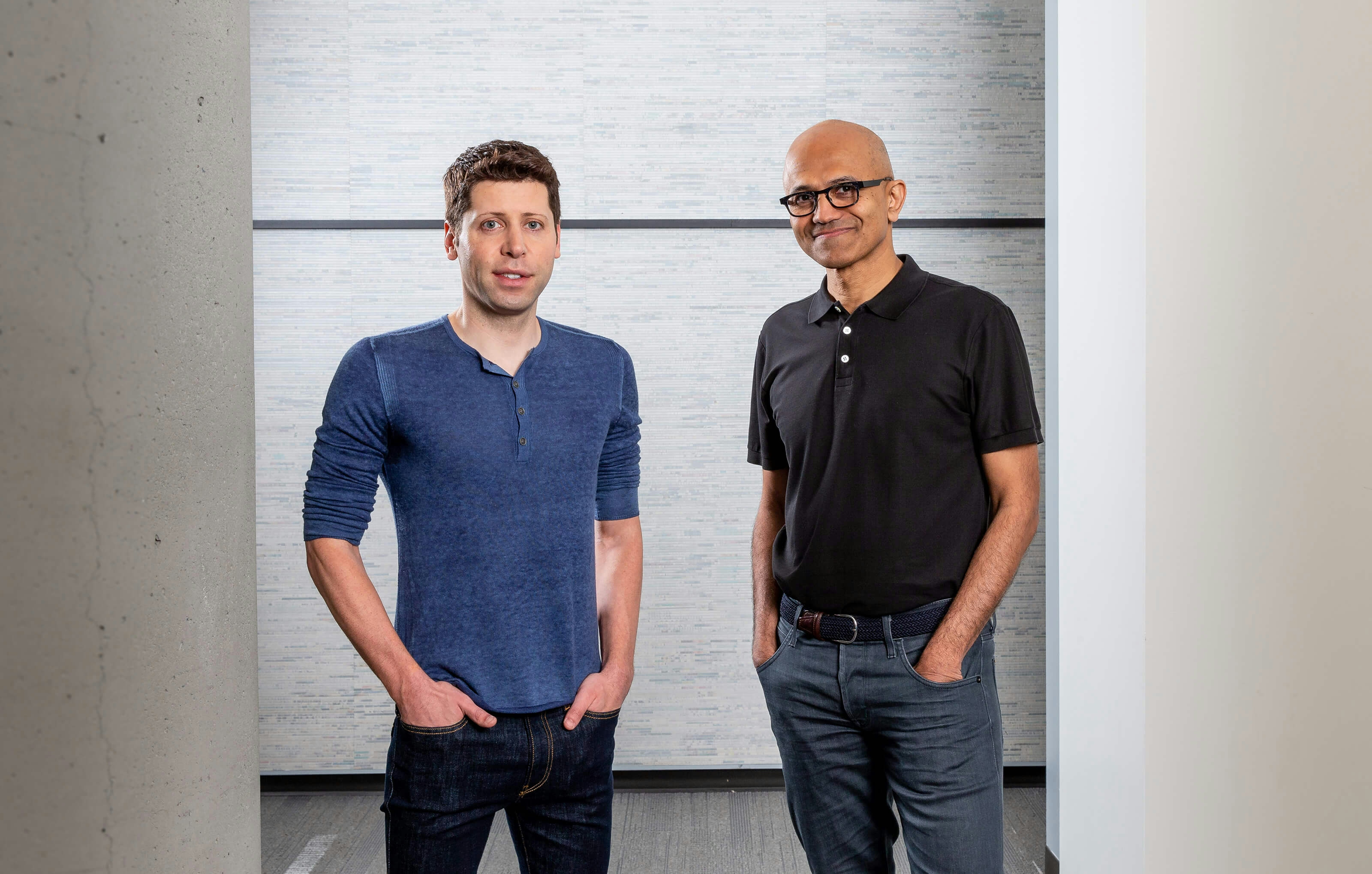
Despite its achievements, OpenAI has faced criticism, particularly after its shift from a non-profit to a "capped profit" status in 2019. Critics argue that this move signaled a shift towards a profit-driven "AI arms race" and a departure from its commitment to developing "safe and beneficial" general artificial intelligence.
OpenAI's mission is to ensure that AGI benefits all of humanity. It aims to build safe and beneficial AGI, but also considers its mission fulfilled if its work aids others in achieving this outcome.
Assistants API
The Assistants API from OpenAI has been generally well-received for its user-friendly nature and its ability to simplify the RAG (Retrieve and Generate) pipeline, which is based on best practices from ChatGPT.
It's designed to streamline the process of building AI assistants, making it accessible even for developers new to AI.
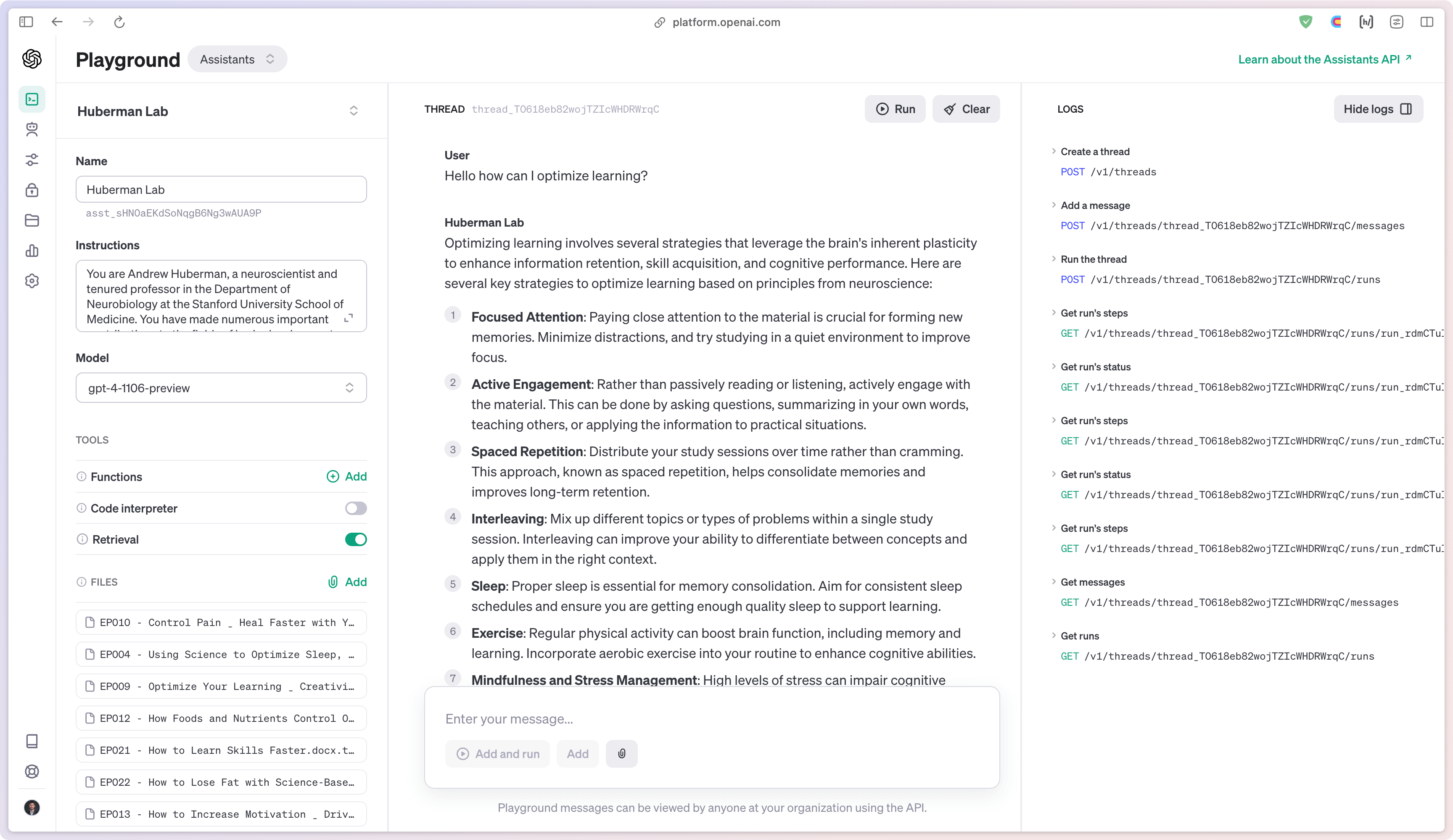
The API handles memory management automatically, which is a significant advantage for developers. It automates the entire RAG process that developers usually had to custom-build, including chunking documents, indexing and storing embeddings, and implementing vector search to retrieve relevant content to answer user queries.
The Assistants API also introduces the concept of "threads", which allow for capturing recent conversations and providing better answers. However, the current memory setup requires sending the entire thread to a vector database each time a new message is added, which might not be optimal for all use cases.
The API has improved function calling in terms of accuracy, and it now allows for multiple actions to be executed in parallel, which can reduce the number of round-trips calling the API. However, setting up custom triggers for when a function call should be executed can be a challenge.
In terms of cost, the API charges $0.03 per session, and each session is active by default for one hour. However, for some use cases, other commercial models like PaLM or Claude, or open-sourced models like Llama, might provide better results in terms of cost, latency, and quality.
However, there are some limitations to be aware of. For instance, the text embedding model used by OpenAI, the text-embedding-ada-002 model, is not the best one available. It currently ranks 20th on the MTEB benchmarks, and other models like Instructor XL, which are state-of-the-art on 70 tasks, cannot be used with the Assistants API.
Overall, the Assistants API is a powerful tool for developers looking to build AI assistants, but it might require a custom setup for specific use cases or for those looking to use models other than those provided by OpenAI.
GPT-4 Turbo
GPT-4 Turbo is the latest and more powerful version of OpenAI's generative AI model, announced in November 2023. It provides answers with context up to April 2023, whereas prior versions were cut off at January 2022. GPT-4 Turbo has an expanded context window of 128k tokens, allowing it to process over 300 pages of text in a single prompt. This makes it capable of handling more complex tasks and longer conversations.

In the benchmarks conducted by Klu.ai, it was observed when dealing with 60-128k input tokens that GPT-4 Turbo tends to more consistently retrieve facts from the latter 50% of the input.
Benchmarks tested with randomly sampled facts with no intermediate libraries (LangChain, LlamaIndex, etc) or context systems (including Klu Context).
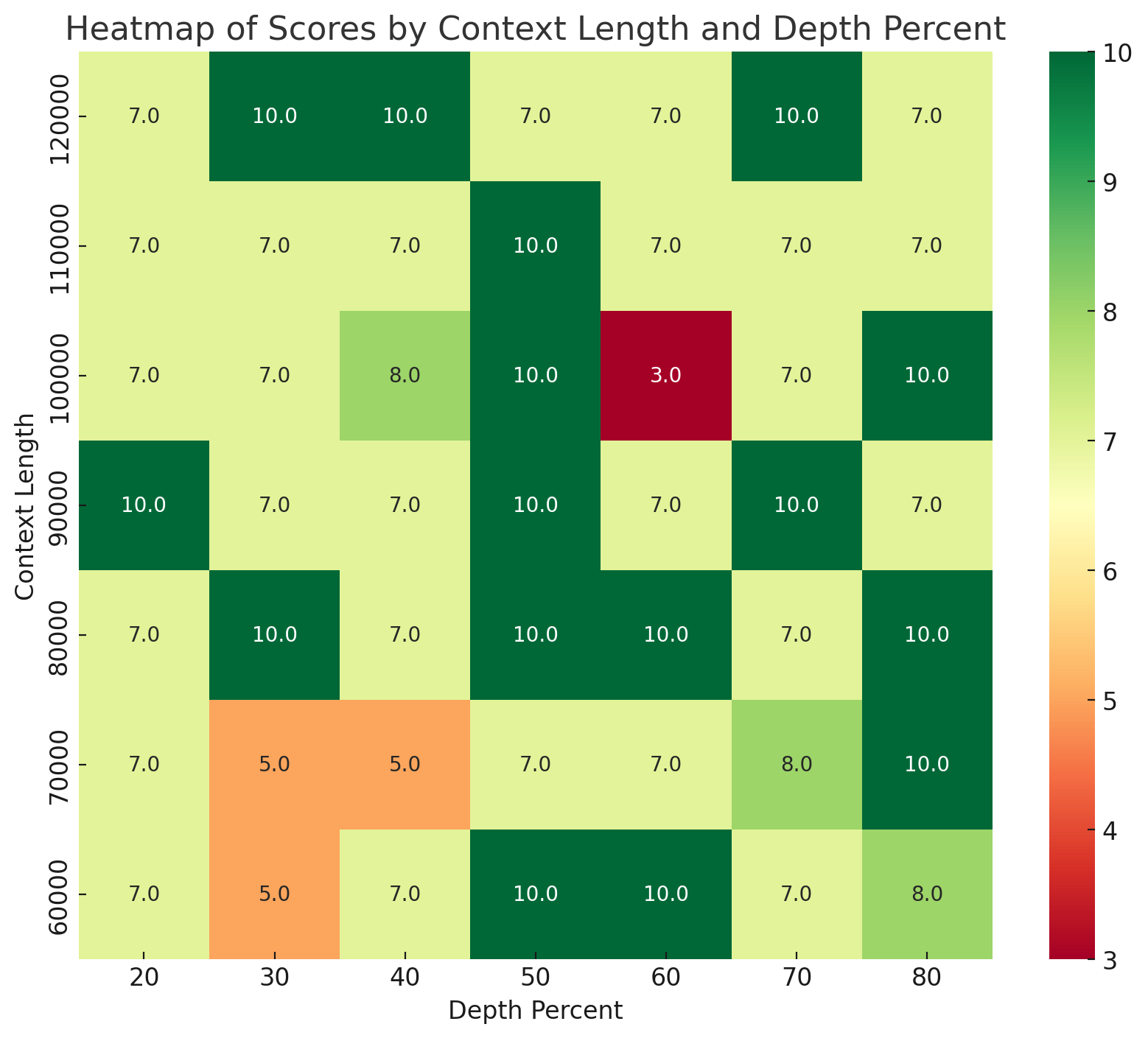
Some of the key features and improvements of GPT-4 Turbo include:
- Updated knowledge base — GPT-4 Turbo has knowledge of events up to April 2023, making it more up-to-date than previous versions.
- Larger context window — GPT-4 Turbo has a 128k token context window, allowing it to process more text in a single prompt.
- Lower cost — GPT-4 Turbo is cheaper to run for developers, with input tokens costing $0.01 per 1,000 tokens and output tokens costing $0.03 per 1,000 tokens.
- Multimodal capabilities — GPT-4 Turbo supports DALL-E 3 AI-generated images and text-to-speech, offering six preset voices to choose from.
- Customizable chatbots — OpenAI introduced GPTs, allowing users to create custom versions of ChatGPT for specific purposes.
GPT-4 Turbo is available in preview for developers and will be released to all users in January 2024.
GPT-4V and TTS
GPT-4V is an extension of OpenAI's GPT-4 model that incorporates image processing capabilities. It can analyze and interpret images, allowing users to ask questions about visual content and receive contextually relevant answers.
GPT-4V can handle tasks such as visual question answering, identifying objects in images, and reading text within images.
Text-to-Speech (TTS) is a technology that converts written text into spoken words. OpenAI's TTS API features six unique voices: alloy, echo, fable, onyx, nova, and shimmer.
Each voice has its own character, providing natural-sounding speech for various applications. Combining GPT-4V and TTS can make visual content more accessible for visually impaired.
What is the goal of OpenAI?
OpenAI's primary goal is to ensure that artificial general intelligence (AGI) benefits all of humanity. AGI refers to highly autonomous systems that outperform humans at most economically valuable work. OpenAI aims to build safe AI and distribute its benefits as widely and evenly as possible. The organization is committed to developing digital intelligence in a way that is most likely to benefit humanity as a whole, unconstrained by a need to generate financial return.
OpenAI's research focuses on generative models and how to align them with human values. They are also working on building safe and beneficial AGI, and they consider their mission fulfilled if their work aids others in achieving this outcome. OpenAI's research is characterized by a long-term focus on fundamental advances in AI and its capabilities.
OpenAI was initially a non-profit organization, but it transitioned to a capped-profit model in 2019. Despite this change, the organization maintains its commitment to safety and the broad distribution of benefits. OpenAI's research and patents are intended to remain open to the public except in cases where they could negatively affect safety.
OpenAI's work is not without criticism. The shift from non-profit to capped-profit status fueled criticism that its commitment to building "safe and beneficial" general artificial intelligence had become a profit-driven "AI arms race". Despite these criticisms, OpenAI continues to innovate and develop new technologies, with a clear goal of democratizing AI.
Early History
OpenAI, a private tech firm with a keen focus on artificial intelligence, was established in December 2015. The founding team includes Elon Musk, the co-founder of SpaceX and CEO of Tesla, Greg Brockman from the renowned data startup Cloudera, and entrepreneur Rebekah Mercer. Other key founding members include Dimitry Ioffe, Pieter Abbeel, and Patrick Mynyk. Since its inception, OpenAI has made significant strides in the AI landscape, benefiting both its community and the broader field of AI.
One of OpenAI's notable projects is OpenAI Zero, an AI research lab dedicated to creating an AI software program capable of autonomously outperforming any other in a significantly shorter time frame. The development of this project began in early 2017 and was completed by the end of the same year. This achievement underscored the fact that the current state of AI technology is far from reaching its full potential, thus opening up exciting possibilities for future advancements.
OpenAI Milestones
2015 OpenAI Gym Development — Late in the year, OpenAI embarked on the development of OpenAI Gym. This toolkit is designed for the development and comparison of reinforcement learning algorithms and offers a suite of environments, including simulated robotics tasks and board games like Go.
2017 Universe Platform Unveiled — In January, OpenAI unveiled Universe, a software platform that enables training agents across a variety of environments, including games, websites, and real-world applications.
First Commercial API — April saw the announcement of OpenAI's first commercial product, an API for building bots, empowering developers to train bots for tasks such as playing games or completing tasks on websites.
AI Plays Dota 2 — In May, OpenAI released a paper detailing their work on an AI agent that defeated a professional human player in a 1v1 Dota 2 match.
AI Plays 3D Hide-and-Seek — November brought a paper outlining the training of an AI agent that triumphed over human players in a 3v3 match of 3D multiplayer hide-and-seek.
AI Plays StarCraft II — December ended the year with a paper describing the training of an AI agent that defeated a professional human player in a 1v1 StarCraft II ladder match.
2018 AI Plays Go — Starting the year with a bang, January's paper described the training of an AI agent that defeated a professional human player in Go.
AI Plays Poker — In February, a paper was released outlining the training of an AI agent that triumphed over professional human players in a 6-player poker game.
AI Wins at Dota 2 Again — Continuing their winning streak, May's paper detailed the training of an AI agent that defeated a team of professional human players in a 5v5 Dota 2 match.
AI Plays 3D Hide-and-Seek Again — September saw another paper on the training of an AI agent that triumphed in a 3v3 match of 3D multiplayer hide-and-seek.
AI Conquers Go Again — The year ended with a December paper describing the training of an AI agent that once again defeated a professional human player in Go.
The Rise of GPT: 2018 to 2023
Since 2018, OpenAI has achieved several significant milestones:
-
GPT-1 (June 2018) — This was the first model that generated coherent and diverse text on any topic, marking a breakthrough in natural language generation.
-
GPT-2 (February 2019) — This model was a significant evolution from GPT-1, capable of generating long, realistic text. It was so powerful that it was initially withheld from public access.
-
GPT-3 (May 2020) — GPT-3 took everything to the next level, generating high-quality text on almost any topic and performing impressive feats of understanding. It was OpenAI's first model to be offered as a commercial service.
-
OpenAI Five (April 2019) — OpenAI Five was the first AI to beat the world champions in an esports game, Dota 2. It also demonstrated a rudimentary ability to be a teammate with humans.
-
GPT-3.5 (November 2022) — This was when ChatGPT finally came out, supercharging everything as it included reinforcement learning.
-
GPT-4 + Code Interpreter (July 2023) — This latest release from OpenAI has a code sandbox that enables data analysis and coding entire apps.
-
GPT-4v + GPTs (November 2023) — This latest release of the GPT-4 model series features a 100k token context window and a new knowledge cut-off date.
-
Traffic Increase (April 2023) — OpenAI.com saw a tremendous increase in traffic, recording 1.8 billion visits, an increase of 11.12% from the 1.6 billion visits recorded in the previous month.
-
Workforce Growth — OpenAI's workforce grew from 52 in 2018 to 375 in 2023, demonstrating its dedication to growing its operations and capabilities.
-
Industry Adoption — OpenAI's platform has been widely used across several industries, with the technology industry emerging as the leader. It's used by 251 different technology-related businesses to improve their operations and products.
-
Global Presence — As of May 2023, OpenAI has a presence and support network in 163 nations, regions, and territories.
These milestones reflect OpenAI's commitment to advancing the field of artificial intelligence and its impact on various industries and sectors.
November 2023 Security Breach
On November 8, 2023, OpenAI's services, including ChatGPT and its API, were hit by significant outages and Distributed Denial of Service (DDoS) attacks, leading to global user disruptions. These attacks, claimed by hacker group Anonymous Sudan, were in protest of OpenAI's cooperation with Israel and their alleged involvement in AI weapon development. The service instability began with partial disruptions on November 7, escalating to a major outage the following day, coinciding with a surge in demand from new features released on DevDay. Despite several mitigations, the outages highlighted the need for robust contingency plans for AI-dependent operations in content creation, data analysis, and customer service automation.
In the wake of the outages, users sought alternatives like Google Bard, which also faced issues, underscoring the widespread impact. OpenAI's CEO, Sam Altman, attributed the instability to overwhelming demand for the newly unveiled features. Microsoft, a key investor in OpenAI, temporarily restricted employee access to ChatGPT on November 9, 2023, citing data security concerns, but this measure was promptly reversed after being deemed an error during endpoint control system tests for large language models (LLMs). Microsoft continues to integrate OpenAI's LLM into its AI-powered tools, including the rebranded Bing Chat, now known as Microsoft Copilot, enhancing its search, Microsoft Edge, and Windows 11 offerings to compete with ChatGPT.
Altman & Brockman Departure
In a series of upheavals at OpenAI, CEO Sam Altman was dismissed on November 17, 2023, for not being fully transparent with the board, impeding their oversight. Following the board's review, CTO Mira Murati briefly assumed the role of interim CEO. Concurrently, President Greg Brockman resigned after being informed of his removal from the board, though he was offered to stay in a different capacity.
The dismissals led to the resignation of three senior researchers: Jakub Pachocki, OpenAI's director of research; Aleksander Madry, head of AI risk evaluation; and Szymon Sidor, a long-term researcher. These exits reflect internal conflicts over the company's pace of AI development and its safety protocols.
Internal debates at OpenAI questioned the balance between rapid commercialization and AI safety, with some employees suspecting Altman's dismissal was due to prioritizing commercial interests over safety. Despite these leadership changes, Microsoft, a major partner, confirmed that its collaboration with OpenAI would continue unaffected.
Over the following weekend, Altman attempted to regain his position with support from investors, employees, and executives, but to no avail. Instead, Emmett Shear, Twitch's co-founder, was appointed as interim CEO. Shortly after, Microsoft announced that both Altman and Brockman would lead a new advanced AI research team, underscoring the intricate relationship between Microsoft and OpenAI.
These events have spotlighted the tension within the AI community between commercial potential and safety concerns. The outcome of these leadership changes and their influence on OpenAI's trajectory and its partnership with Microsoft remain to be seen.
2023, Shear as OpenAI CEO
Emmett Shear, the former CEO of Twitch, has been appointed as the interim CEO of OpenAI on November 19, 2023, following the sudden departure of Sam Altman. In the first days of his tenure, Shear has outlined a 30-day plan for the company, which includes three key objectives:
- Hire an independent investigator to examine the events that led to Sam Altman's departure and generate a full report.
- Engage with stakeholders such as employees, partners, investors, and customers.
- Restructure the management and leadership team in light of recent departures.
Shear aims to address the turmoil within the company and drive changes in the organization, including pushing for significant governance changes if necessary.
Shear has expressed his belief in the importance of OpenAI and the potential dangers of AI. He has stated that he took the job because he believes OpenAI is one of the most important companies currently in existence. He has also expressed concerns about AI's potential to pose an existential threat to humanity, describing AI as "pretty inherently dangerous".
Despite the upheaval following Altman's departure, Shear has stated that OpenAI's partnership with Microsoft remains strong. He has also emphasized that he took the job with the support of the board for commercializing OpenAI's models, indicating that he does not see safety concerns as the cause of Altman's departure.
Shear's appointment comes at a challenging time for OpenAI, with about 600 employees threatening to resign unless Altman returns. Shear's initial focus will be on investigating the process that led to the current situation, opening lines of communication with partners and employees, and rebuilding the management and leadership teams.
2024, Atlman returns as OpenAI CEO
Shear announced on Twitter that his tenure as CEO lasted just over 48 hours and that Sam Altman returned as CEO.
Q* and AGI Achieved Internally
On September 18, 2023, Jimmy Apples tweeted "Agi has been achieved internally." This Tweet was subsequently deleted, but kicked off Internet-wide speculation as Mr. Apples' leaks regarding Gobi and GPT-4 proved correcty.
OpenAI's Q* (pronounced "Q-star") is an unreleased project that has been described as a potential breakthrough in the pursuit of artificial general intelligence (AGI), which OpenAI defines as AI systems that surpass humans in most economically valuable tasks. The specifics of Q* are not fully disclosed, but it's suggested that it could be related to Q-learning, a model-free reinforcement learning algorithm.
Project Q* is an alleged internal project at OpenAI that may represent a step towards AGI, as per anonymous sources. While the project is said to involve a powerful AI algorithm capable of solving grade-school math problems, the specifics of the technology and the nature of the safety concerns raised by researchers are not disclosed. The speculative connection to Q-learning and the potential integration with language models should be interpreted with caution. The organizational changes at OpenAI surrounding the project highlight its perceived importance but also reflect internal disagreements and complexities. Given the lack of verified information, any conclusions about Project Q* should be considered tentative and subject to further confirmation and analysis.
Q* has been linked to a significant event at OpenAI, where several staff researchers wrote a letter to the board of directors warning of a powerful AI discovery that they believed could threaten humanity. This letter was a key development before the board's ouster of OpenAI CEO Sam Altman.
The Q* model has demonstrated the ability to solve mathematical problems at the level of grade-school mathematics. This is significant because researchers consider math to be a frontier of generative AI development. Currently, generative AI is good at writing and language translation by statistically predicting the next word, and answers to the same question can vary widely. But conquering the ability to do math — where there is only one right answer — implies AI would have greater reasoning capabilities resembling human intelligence.
Some speculate that Q* might bridge a significant gap between Q-learning and pre-determined heuristics, potentially giving a machine "future sight" into the optimal next step, saving it a lot of effort. This could mean that machines can stop pursuing suboptimal solutions, and only focus on optimal ones.
It's also suggested that Q* could enable OpenAI's large language models to directly handle problems in math and logic, which previously required the use of external computer software. However, these are speculations and the exact nature and capabilities of Q* remain undisclosed by OpenAI.
GPT-5 Training Rumors
OpenAI's development of GPT-5, the successor to its language model series, is underway, though CEO Sam Altman has not announced a specific start date for training. The anticipated timeline, informed by past model developments, suggests a scaling of 10-20 times that of GPT-4, with a training period from December 2023 to February 2024, followed by reinforcement learning and human feedback (RLHF) until April 2024, and extensive safety testing through October 2024. The training is expected to utilize between 250,000 to 500,000 Nvidia H100 GPUs and could cost between $1.25 to $2.5 billion USD. An official announcement is projected for OpenAI DevDay 2 in November 2024.
Initial development stages involve establishing the training framework, coordinating annotators, and curating a dataset, with a web crawler named GPTBot being employed to enhance data diversity. Despite earlier hesitations to progress beyond GPT-4, OpenAI has strategically decided to advance with GPT-5, even trademarking the term in August. This shift indicates a renewed focus on achieving Artificial General Intelligence (AGI) and underscores the importance of safety and ethical considerations in the model's development.
While there is significant anticipation for GPT-5's potential to transform various industries, concerns about bias, misinformation, and misuse remain. Contradictory reports about the release timeline have emerged, with Elon Musk suggesting a possible launch by the end of 2023, which differs from Altman's more conservative statements.
The timeline for GPT-5's training and launch is contingent upon the availability of training data and financial resources. The high demand for NVIDIA's H100 chips, crucial for AI training data centers, has been a challenge, but the situation is expected to improve with competitors like AMD and Microsoft entering the hardware space. As OpenAI prepares for GPT-5, further details are anticipated in the near future.
What is OpenAI's competitive landscape?
OpenAI, led by Sam Altman and technical experts like Ilya Sutskever, holds a strong position in AI research despite facing resource-rich competitors such as big tech companies.
OpenAI's competitive landscape:
-
Research: OpenAI competes with Google DeepMind, Facebook AI Research (FAIR), and top academic institutions in advancing AI.
-
Natural Language Processing: The GPT series, including GPT-4, challenges models from Google (PaLM 2), Microsoft (Phi-2), Meta (Llama 2), Anthropic (Claude 2), and Cohere (Command).
-
Robotics: OpenAI's robotics projects like Dactyl contend with industry leaders such as Boston Dynamics.
-
AI Safety and Ethics: Organizations like the Future of Humanity Institute and the Center for Human-Compatible AI match OpenAI's focus on beneficial AI.
-
Commercial Services: OpenAI's API competes with cloud AI services from Google Cloud AI, Amazon AWS AI, and Microsoft Azure AI.
Despite intense competition, OpenAI remains a key independent AI research lab leading across most dimensions.
What are some of the challenges faced by OpenAI?
OpenAI, a prominent AI research lab, is navigating a series of challenges:
The lab has experienced a notable decline in its GPT product user base, particularly ChatGPT, partly due to API cannibalization where users prefer building custom bots using the ChatGPT API over the original platform. Financially, OpenAI is under strain, incurring daily costs of $700,000 to run ChatGPT and facing massive cash burn by the end of 2024 without additional revenue streams or optimization, despite Microsoft's significant investment.
Competition is intensifying with the emergence of open-source language models like Meta's Llama 2, which, in collaboration with Microsoft, offers a compelling free alternative to OpenAI's models. This shift has led to many startups transitioning to open-source options. Additionally, a GPU shortage is impacting OpenAI's model training capabilities, with NVIDIA GPUs expected to be available only in the second quarter of 2024.
The quality of OpenAI's outputs has come under scrutiny following its trademark filing for 'GPT-5', suggesting a need for further model training. The organization has also faced criticism for contributing to the AI hype cycle, maintaining secrecy around some research efforts, and making strategic choices that prioritize the race to AGI, potentially at the expense of its foundational principles.
These challenges underscore the dynamic and demanding environment of AI research and development, reflecting the multifaceted pressures that institutions like OpenAI confront in their quest to advance AI technology.
Future Directions for OpenAI
OpenAI's roadmap for advancing artificial general intelligence (AGI) is designed to benefit humanity. Their strategy involves:
Deploying powerful AI systems in real-world scenarios to prepare for AGI, while focusing on creating models that are increasingly aligned with human intent, exemplified by the evolution from GPT-3 to InstructGPT and ChatGPT. Special projects are underway, including the detection of covert AI systems, winning online programming competitions, and developing complex simulations with enduring agents.
The development of the GPT series continues, with GPT-5 poised to surpass its predecessors in capability, leveraging new GPU deployments in the Azure cloud expected to commence in the coming year.
Research efforts are concentrated on alignment, fairness, representation, interdisciplinary studies, and enhancing model interpretability. Additionally, OpenAI is considering the production of proprietary AI chips to mitigate the GPU shortage and support the creation of more sophisticated AI models.
OpenAI prioritizes collaboration with research and policy organizations to collectively tackle AGI challenges, maintaining transparency in their alignment techniques and responsibly sharing research findings.
As a leader in AI research, OpenAI is expanding its AI software development, which is integral to companies like Google, Facebook, and Microsoft. The lab is branching into new domains such as robotics and natural language processing and intensifying collaborative research to elevate AI technology.
FAQs
What benefits does OpenAI aim to achieve with artificial general intelligence and AI research?
OpenAI's mission is to ensure that artificial general intelligence benefits all of humanity. They are committed to advancing digital intelligence in a way that can scale to solve complex problems, with the ultimate goal of creating a positive human impact through the development of safe and beneficial AI.
OpenAI has introduced a variety of tools and platforms aimed at advancing AI technology and benefiting society. Among these, the OpenAI Gym has been released multiple times, providing a platform for developing AI through deep learning and machine learning models. This initiative aligns with OpenAI's mission to ensure that the development of human-level AI adheres to individual human wills and collaborates freely for the greater good. While OpenAI began as a nonprofit organization, its focus has always been on creating machine learning models that can benefit humanity at large.
How is OpenAI advancing AI technology?
OpenAI is at the forefront of developing AI and deep learning technologies, aiming to advance digital intelligence. They are dedicated to creating machine learning models and tools that can train AI systems to perform a wide range of tasks, with the intention to benefit humanity.
What are some notable achievements of OpenAI?
OpenAI released the generative pre-trained transformer series, which has been a significant milestone in AI's surprising history. These machine learning models have set new standards in the field and have been widely adopted for various applications, including the ability to generate images.
OpenAI gym demonstrates how much human level capabilities OpenAI released before being required to roll back the OpenAI gym because it was too powerful compared to how OpenAI wants to work as its OpenAI nonprofit controls everything.
How does OpenAI support its staff and their contributions?
OpenAI issues a special kind of equity to its staff, recognizing their contributions to the organization's mission and the broader field of AI. This approach aligns with OpenAI's values of collaboration and shared success in the pursuit of beneficial AI.
Is OpenAI a nonprofit organization?
While OpenAI began as a nonprofit, it has since transitioned to a "capped-profit" model with OpenAI LP. This change allows for the attraction of capital investments while maintaining a focus on a positive human impact and the safe development of artificial intelligence software.
How does OpenAI engage with the machine learning community?
OpenAI launched and introduced various machine learning tools and models to the community, fostering an environment of open collaboration. They believe in the power of shared knowledge and resources to accelerate progress in AI research and development.
What is OpenAI's approach to training AI systems?
OpenAI's approach to train AI systems involves rigorous research and development, ensuring that their models, such as the generative pre-trained transformer, can understand and generate human-like text. This contributes to the advancement of AI and reflects OpenAI's commitment to benefit humanity.